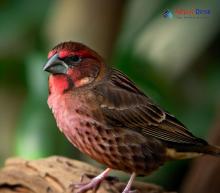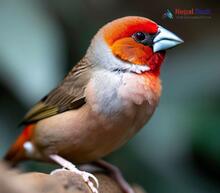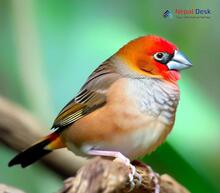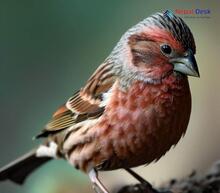Exploring the World of Carpodacus: Nepal's Unique Avian Species and Their Intriguing Classification
Nestled within the diverse Himalayan ecosystem, Nepal boasts an incredible array of bird species. Among these fascinating avians, one genus stands out - Carpodacus. With their vibrant colors and evolutionary relationships, Carpodacus has captured the attention of scientists and bird enthusiasts alike. Here, we'll delve into the world of Carpodacus, exploring their classification, common features, evolutionary relationships, and nomenclature.
Carpodacus: A Unique Genus Among Nepal's Avifauna
Carpodacus is a genus belonging to the family Fringillidae, which includes various types of finches. The members of this genus are commonly referred to as rosefinches, owing to their characteristic rose-colored plumage. Found mainly in Asia and Europe, several species of Carpodacus inhabit the landscapes of Nepal. What sets them apart from other birds? Let’s take a closer look at their distinct features.
Common Features: More Than Just a Pretty Plumage
While the striking rosy hue is undoubtedly their most famous attribute, Carpodacus' traits extend beyond aesthetics. Rosefinches are small to medium-sized birds with rounded wings and tail feathers. These features enable them to navigate through the dense foliage in mountainous habitats effortlessly. Additionally, they possess strong, conical bills adapted for cracking seeds – a staple in their diet.
Deciphering Evolutionary Relationships: A Genetic Journey
To understand the evolutionary relationships among rosefinches and other finches within the Fringillidae family, scientists have turned to genetic analysis. Recent studies have made use of mitochondrial DNA research to uncover unexpected connections between various finch species.
These findings have shed light on how bird species diverged over time due to factors such as geography or niche specialization. Moreover, they've illuminated the complex relationships between the Carpodacus genus and other finches. This invaluable information helps us appreciate the intricacies of avian evolution on a deeper level.
Nomenclature: The Linguistic Legacy of Carpodacus
The naming of the Carpodacus genus can be traced back to zoologist Giovanni Antonio Scopoli, who coined the term in 1766. Derived from Greek words "karpos," meaning fruit, and "dakos," which translates to biter, the nomenclature highlights their strong seed-cracking bills.
Scientific classification follows specific rules and guidelines that facilitate global communication among researchers. By adhering to these conventions, scientists can accurately discuss, analyze, and share crucial information about various animal species – including the captivating Carpodacus.
Final Thoughts: Appreciating Nepal's Rosefinch Gem
By examining the unique aspects of Carpodacus species – from their classification and common features to evolutionary relationships and nomenclature – we begin to see why these birds hold a special place in both science and popular culture. Their vibrant presence in Nepal's rich biodiversity serves as a vivid reminder of our responsibility to protect and conserve these remarkable birds and their ecosystems for future generations.




